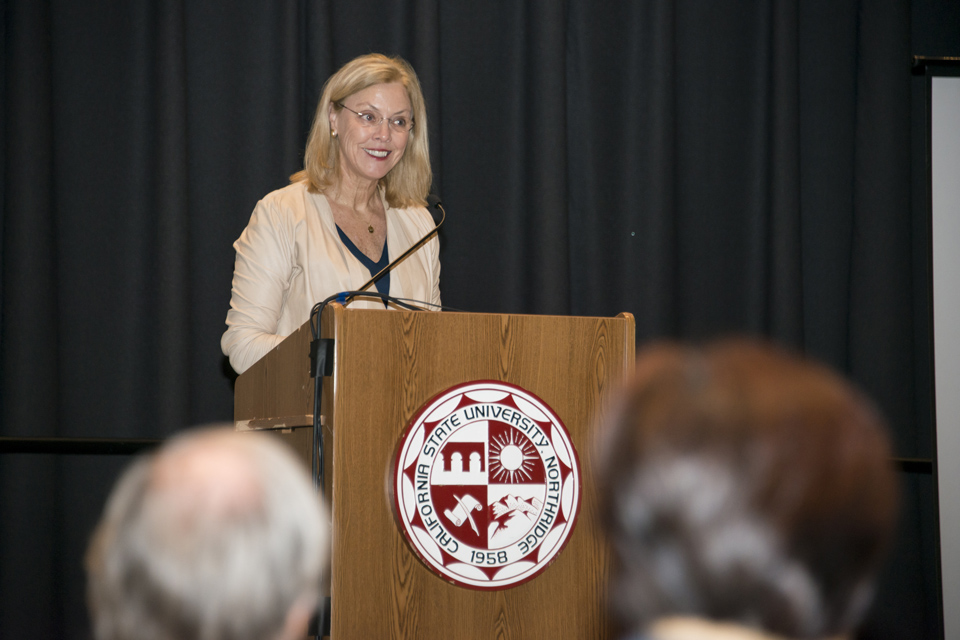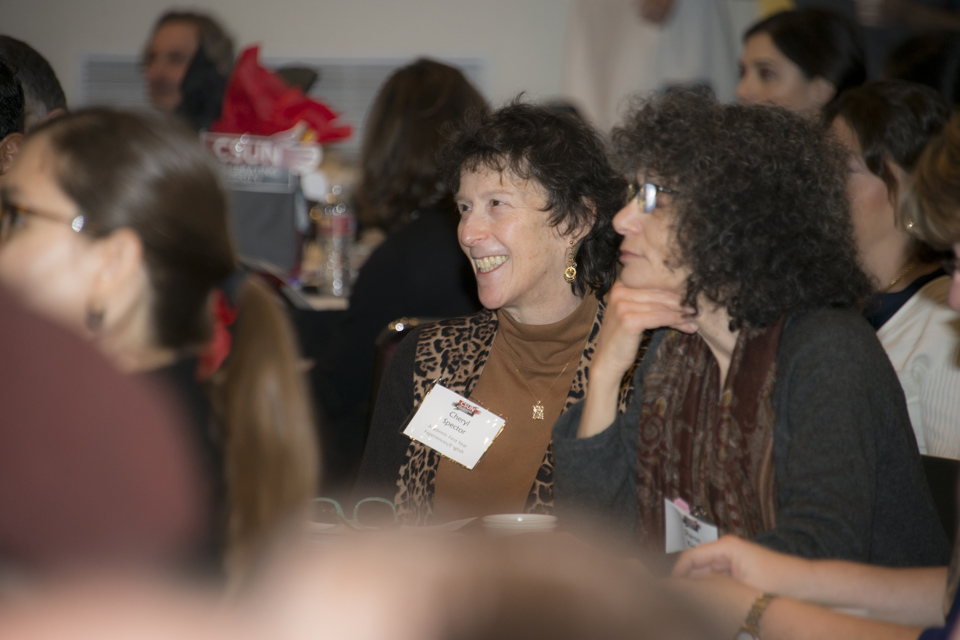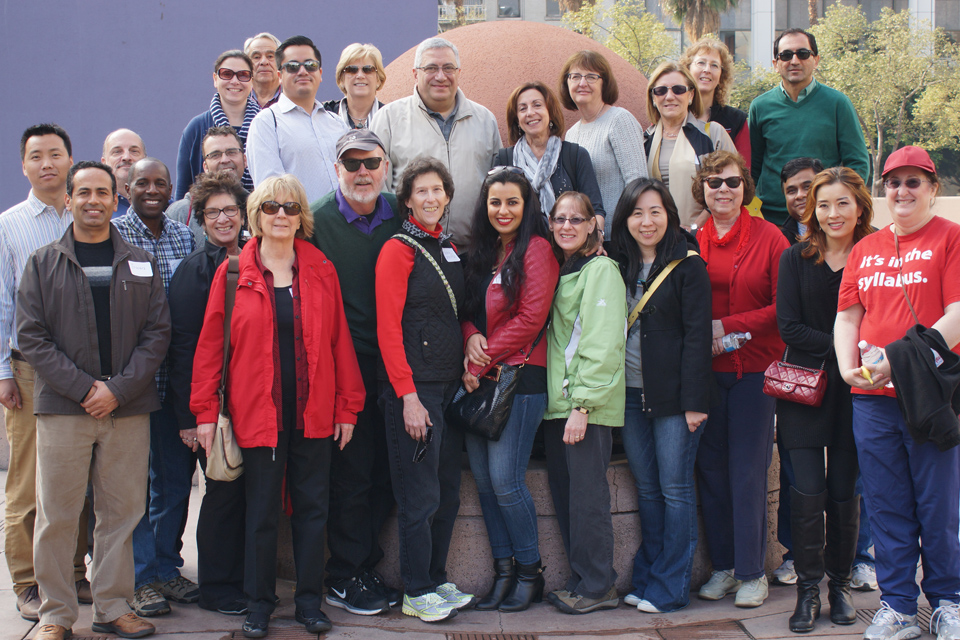CSUN President Harrison Champions Inclusive Excellence, Diversity in Faculty Retreat Keynote Address
Citing a wide array of higher education thought leaders, California State University, Northridge President Dianne F. Harrison championed inclusive excellence and diversity during her keynote address at CSUN’s annual Faculty Retreat. Focusing on the areas where faculty can have the greatest impact, Harrison highlighted how innovative pedagogy and faculty hiring and retention can influence student learning.
“Inclusive excellence means that every one of our students deserves the very best that we can offer to ensure not only that they complete their degrees but that they also can demonstrate achievement of the expected learning outcomes needed for success in the 21st century,” said Harrison at CSUN’s annual Faculty Retreat.
Harrison, who titled her speech, “The Role of Faculty in Inclusive Excellence and Diversity” said she was pleased when she found out that this year’s retreat was focused on celebrating diversity because it has been one of her priorities. The past year saw CSUN host leaders like Nancy Gutierrez, dean of Liberal Arts and Sciences at the University of North Carolina at Charlotte, and Daryl G. Smith, a senior research fellow at Claremont Graduate University and an expert on faculty diversity.
“I believe we need to have a shared understanding and appreciation of the role of diversity in higher education and specifically at CSUN and the policy and practices that are necessary to achieve the associated benefits for our students and our campus,” Harrison said. “We should not focus exclusively on numbers or simply relax because we have an incredibly diverse student body.
“Rather, the generally recognized and legally sanctioned approach is to focus on the educational benefits that flow from diversity, including improved teaching and learning, preparing students for the 21st century workforce, and enhanced preparation for civic engagement and leadership among others.”
Throughout her address, Harrison pointed to higher education research and data to illustrate her points. During a recent conference on Accelerating Academic Success, Harrison noted that Dr. Eric Cooper, Executive Director of the National Urban Alliance, shared strategies to reach students who are traditionally described as “academically at risk.” In her book, The Pedagogy of Confidence, Yvette Jackson turns the moniker on its head, calling these students “students of opportunity.”
“We also know from many different sources and research studies that students are more engaged and have better learning outcomes when they participate in active, applied learning activities that involve real world issues and cultural contexts to which they can relate personally and also better understand and apply course content,” Harrison said. “High impact practices that include students in research, community service learning, internships, and capstone and culminating projects that occur over more than one semester, should be available to all of our students.”
At the Faculty Retreat, the president also announced plans to appoint a chief diversity officer who will report directly to the president and to create and appoint a Commission on Diversity and Diversity Initiatives composed of faculty, staff, students, administrators and community leaders.
“We need to be open to dialogue and discussion on issues of diversity and inclusion,” Harrison said. “We need to be intentional and strategic about our diversity and inclusion efforts. We must walk the walk. This requires focus, sustained efforts and collaboration across many institutional sectors.”
Harrison’s remarks were made during her keynote address on Jan. 12. About 165 faculty attended the two-day retreat. The event was opened with a welcome from Acting Faculty Senate President Adam Swenson and event co-chairs Jongeun Kim and Christina Mayberry.
The retreat included a variety of panels and presentations, including “Diversity, Inclusiveness, and Assessment: Do We Need to Check Our Assessment Practices?,” “Knowing Me, Knowing You: Getting to Know the International and Exchange Student Center,” and “Engaging in Safe, Meaningful, and Connecting Conversations about Diversity.” Provost and Vice President for Academic Affairs Harry Hellenbrand offered remarks on “Why Diversity Matters.”
In support of the theme, students in the Department of Art’s printmaking class produced hand-printed covers inspired by the diversity of the campus. The second day of the retreat included a field trip to historic downtown Los Angeles and lunch in Chinatown.
“We as a faculty are only going to get better at understanding and promoting diversity if we talk about it,” said Swenson, a professor in the Department of Philosophy. “I hope this event gives us an opportunity to do that and begin to open the dialogue.”
Jessica ChenFeng, a professor in the Department of Educational Psychology and Counseling, who co-presented a discussion on engaging in safe, meaningful and connecting conversations about diversity, said faculty should be cognizant that not all students come from the same backgrounds and that students from varying ethnic and racial backgrounds bring those experiences to the classroom.
“These experiences are not always celebrated or encouraged,” ChenFeng said. “We hope our presentation brought some awareness.”






 experience
experience